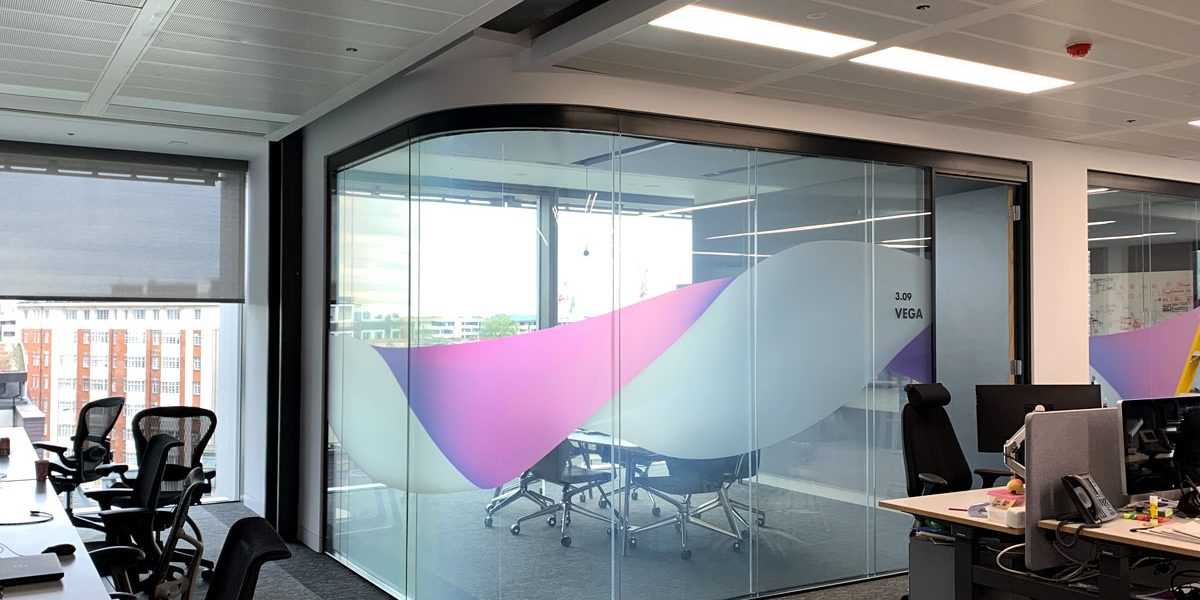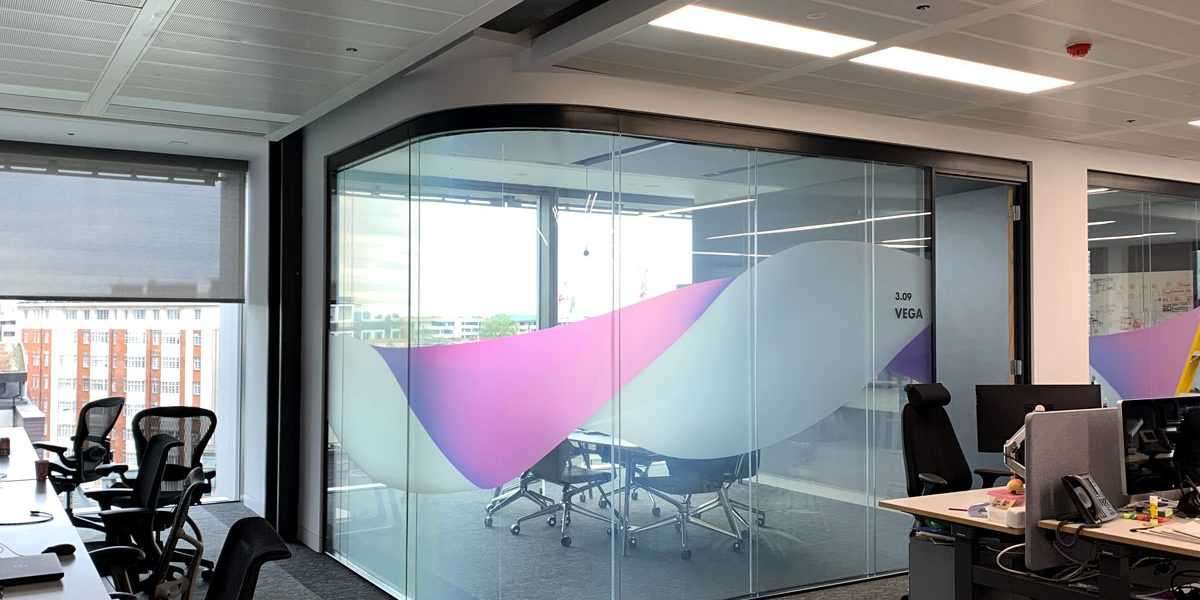Smart glass, also called LCG® (light control glass), switchable glass or smart privacy glass, is helping to define the architectural, automotive, interior, and product design industries.
In the simplest definition, smart glass technologies alter the amount of light transmitted through typically transparent materials, allowing these materials to appear as transparent, translucent, or opaque. The technologies behind smart glass help resolve the conflicting design and functional demands for balancing the benefits of natural light, views, and open floor plans with the need for energy conservation and privacy.
This guide is intended to aid your research and decision-making process about implementing electric switchable glass or smart glass technology into your next project, or including it to your products and services.
What Is Smart Glass?
Smart glass is dynamic, allowing a traditionally static material to become alive and multifunctional. This technology allows for the control of various forms of light including visible light, UV, and IR. Smart privacy glass products are based on technologies that allow transparent materials (like glass or polycarbonate) to switch, on demand, from clear to shaded or completely opaque.
The smart switchable glass technology can be integrated into windows, partitions and other transparent surfaces in various sectors, including architecture, interior design, automotive, smart retail windows, and consumer electronics.
There are two primary types of smart glass: active and passive.
These are defined by whether or not their changeability requires an electrical charge. If so, it’s categorized as active. If not, it’s categorized as passive.
The term smart glass mainly refers to active technologies in which privacy glass films and coatings, activated by an electrical charge, change the appearance and functionality of the glass.
Types of active switchable glass technologies and their common applications include:
• Polymer Dispersed Liquid Crystal (PDLC) glass, eg: typically seen in privacy partitions in various industries
• Suspended Particle Device (SPD) glass, eg: windows that tint to shade as seen in automotive and buildings
• Electrochromic (EC) glass, eg: coated windows that slowly tint for shading
The following are the two passive smart glass technologies and common applications for each:
• Photochromic glass, eg: eyeglasses with coatings that automatically tint in sunlight.
• Thermochromic glass, eg: coated windows that change in response to temperature.
Synonyms for smart glass include:
LCG® – light control glass | Electric Switchable glass | Smart tint | Tintable glass | Smart Privacy glass | Dynamic glass
The technologies that allow you to instantly switch surfaces from transparent to opaque are the ones referred to as Privacy Smart Glass. They are particularly popular for glass-walled or partitioned conference rooms in agile workspaces based on open floor plans, or in hotel guestrooms where space is limited and traditional curtains ruin design aesthetics.
How Smart Glass Works
Active smart glass technology allows for the control of various forms of light (visible, IR, UV) with electricity. With electricity, glass is switched from opaque to transparent, allowing for dynamic light control.
PDLC and SPD smart glass technology is an active glass technology that switches states with electricity. The unique particles or molecules inside our films scatter or align as films are turned on and off, allowing light to pass through for opacity or transparency, and the switchable control of various forms of light (visible, IR, UV).
Smart glass using PDLC or SPD includes a film interlayer that is either laminated or retrofitted onto glass. This film interlayer consists of a PDLC formulation, or an SPD emulsion, that is coated between two sheets of transparent materials that each have an ITO conductive coating. When electricity is applied, the ITO conductive coating forces the molecules or particles in the chemical layer of the film to align, creating transparency.
While PDLC and SPD are most commonly applied to films, electrochromic products are coated directly onto ITO conductive glass.
One key trait all three technologies share is the ability to change the transparency of glass through polarization (a uniform lining up) of their molecules or particles inside the formulation (PDLC) or emulsion (SPD). When off (absence of voltage), the molecules are randomly scattered, and therefore, light cannot pass through the film. When charged, the LC formulation or SPD emulsions polarize, and the molecules align, allowing light to pass through, creating transparency. As voltage decreases, and the film starts turning off, varying levels of opacity are achieved for dynamic shading, privacy, or IR solar light control. A dimming effect can be achieved by controlling the amount of voltage that is applied. In contrast, electrochromic smart glass never goes completely opaque and becomes clear when there is no current and it depolarizes.
Switchable glass technologies use either transformers or controllers to manage power. Controllers can maintain a continuous charge, but transformers have to be turned off for part of the day. The following video demonstrates a variety of controllers used for exhibits at the 2018 Glasstec Trade Fair.
Smart Glass Technologies
Active smart glass is based on PDLC, SPD, and electrochromic technologies. It automatically operates with controllers or transformers with scheduling or manually. Unlike transformers, which can only change glass from clear to opaque, controllers can also use dimmers to gradually change voltage and control light to various degrees.
Polymer Dispersed Liquid Crystal (PDLC)
The technology behind PDLC films used to create smart glass contain liquid crystals, a material that shares characteristics of both liquid and solid compounds, which are dispersed into a polymer.
Switchable smart glass with PDLC is one of the most commonly used technologies. While this type of film is generally used for indoor applications, PDLC can be optimized to maintain its properties in outdoor conditions. PDLC is available in colors and patterns. It is generally available in both laminated (for newly fabricated glass) and retrofit (for existing glass) applications.
PDLC switches glass from dimmable degrees of opaque to clear in milliseconds. When opaque, PDLC is ideal for privacy, projection, and whiteboard use. PDLC usually blocks visible light. However, solar reflective products, such as the one developed by the material science company Gauzy, allows for IR light (which creates heat) to be reflected when the film is opaque.
In windows, simple PDLC limits visible light, but does not reflect heat, unless optimized otherwise. When clear, PDLC smart glass has excellent clarity with a minimum of 2.5 haze depending on the manufacturer. In contrast, Outdoor Grade Solar PDLC cools indoor temperature by deflecting infrared rays, but does not shade windows. PDLC is also responsible for the magic that enables glass walls and windows to become a projection screen or a transparent window instantly.
Because PDLC is available in a variety of types (white, colors, projection support, etc), it is ideal for multiple applications across diverse industries.
Suspended Particle Device (SPD)
SPD contains miniscule solid particles which are suspended in liquid and coated between two thin layers of PET-ITO to create a film. It shades and cools interiors, blocking up to 99% of incoming natural or artificial light within seconds of shifting voltage.
Like PDLC, SPD can be dimmed, allowing for a customized shading experience. Unlike PDLC, SPD does not turn completely opaque, and therefore, is not suited for privacy, nor is it optimized for projection.
SPD is ideal for exterior, sky or water facing windows and can be used in indoor applications as well, where darkness is required. SPD is manufactured by only two companies in the world.
Electrochromic Device (ECD)
Electrochromic privacy glass filters both the light and heat of solar rays. The technology behind ECD differs from PDLC and SPD impacting both its opacity capabilities and transition time.
ECD uses two electrodes to drive ionized particles from the “inside” of the glass (transparent) to the “outside” (opaque). Once the particles have moved, no current is required for them to stay at the current state. This impacts transition time to a gradual speed from its outdoor edges, inward and full transition can take several minutes or more, depending on the size of the glass.
Electrochromic switchable glass is ideal for exterior applications like energy-conserving windows, but not for privacy glass as it does not have the capability to turn completely opaque. The below graphic demonstrates how each technology works.
Website: www.globalsmartglass.com
Search
Popular Posts
-
 10 Hero Offlaner Terkuat di Mobile Legends Season 17 Terbaru 2020!
10 Hero Offlaner Terkuat di Mobile Legends Season 17 Terbaru 2020!
-
 Cerita Rakyat Desa Artjawinangoen Purwokerto - Astana Dhuwur
By Annas Yusuf
Cerita Rakyat Desa Artjawinangoen Purwokerto - Astana Dhuwur
By Annas Yusuf -
 Buy Google Ads Accounts
By Tarim
Buy Google Ads Accounts
By Tarim -
 Omninos Solutions - Your Ultimate Destination for eBay Clone App Development
Omninos Solutions - Your Ultimate Destination for eBay Clone App Development
-
 Biaya 5 Sekolah Elit di Indonesia Ini Bikin Kepala Kita Pening
Biaya 5 Sekolah Elit di Indonesia Ini Bikin Kepala Kita Pening
Categories
- Cars and Vehicles
- Comedy
- Economics and Trade
- Education
- Entertainment
- Movies & Animation
- Gaming
- History and Facts
- Live Style
- Natural
- News and Politics
- People and Nations
- Pets and Animals
- Places and Regions
- Science and Technology
- Sport
- Travel and Events
- Metaverse
- Crypto Currency
- Finance & Banking
- Digital Marketing
- Online Trading
- Property & Architecture
- Interior Design
- Vacation
- Law & Justice
- Job Vacancy
- Otomotive
- Electronics and Electrical
- Home & Architecture
- Business & Business Opportunities
- Social media
- Tips & Tricks
- Tutorials
- Brand Reviews
- Real Estate
- Other









